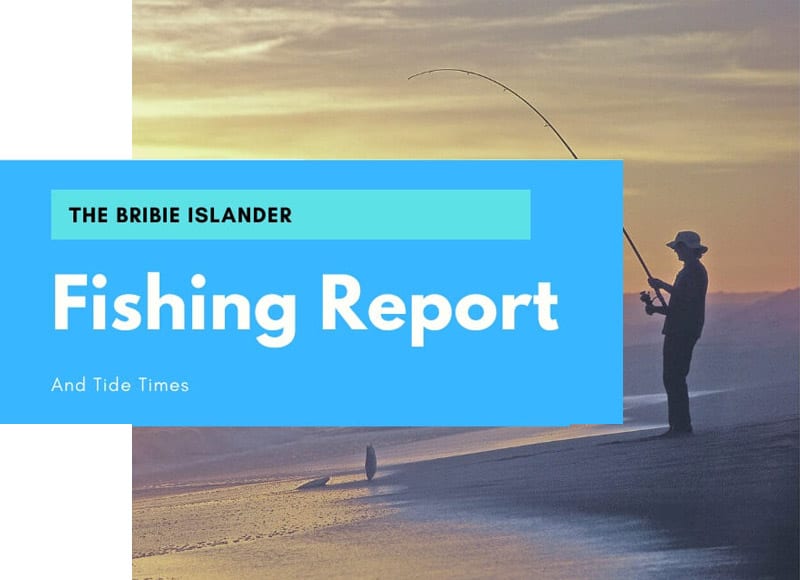June 18, 2021 Fishing Report – The Bribie Islander This report is being written as the cold front is coming through – snow predicted out at Eukey, and freezing westerlies across the southEast. The water temperature is also expected to drop a little over the next few days, which will affect fishing. In the run-up to this cold weather, fishing has been a little inconsistent but certainly busy enough to keep people interested. There have been plenty of good-sized tusk-fish being caught, well above the 30cm legal limit. Emma says there are lots of them, near Ningi Creek but also north of Pacific Harbour. Her favourite bait is usually marinated chicken but Noel found that prawns are really what’s working on the tuskfish. Dan also took a fat 35cm beauty from the Ripples, using a live worm. There’s been some good early-season snapper action at the Ripples as well. It can be frustrating trying to find the right spot, and you may have to catch and release quite a few undersize fish for each legal one, but the succulent fillets make it worth the effort. Remember to handle the undersize snapper with care, avoid touching the lateral line and release them in good condition, so they can keep growing for next year. Drifting over the oyster regeneration project scored a snapper, a sweetlip, two flounder and some bream for Shane and crew. There have been plenty of tuna jumping around there lately, too, and a few good ones being brought in. Jimmy also had a fair bit of luck, a week or so ago, catching snapper, whiting and flounder, all well south of the bridge. Don’t forget that from July 15, the closed season on snapper will begin, and we’ll all have to give the snapper a rest for a month.
Fortunately, flathead are never out of season, and numbers are definitely on the rise in the Passage right now. Bailey was at White Patch, when he had to throw back a 35cm dusky, soon followed by a hearty 45cm one, which he kept. Caught on prawns.
Anyone who is happy to stay inside the Passage over winter will find some good spots, on the water or beside it, where the mainland offers a buffer against the brisk westerlies. Turner’s Camp would be one of the best choices, sitting just south of Ningi Creek – that’s where the Fishability Qld men’s group scored 4 biggies between them. Adrian’s 30cm bream was picked up the next day, at the same spot, over the top of the tide, using squid.
If you can stand the cold, try the sand flats there, early in the evening, especially if there’s a higher tide, with worm, yabbies, prawns or squid strips. Not just flathead, but also whiting can often be found in good numbers. The deeper water off the banks of Turner’s Camp, later in the evening, would be right for casting out lightly weighted worm or yabby bait, with a good chance of quality bream. Lures are trickier than bait for winter fishing and really are most effective on the drift. In the cold waters over winter, fish might not be as keen to chase a lure. If you really prefer lures to bait, you might be best to rely on brightly coloured lures to get them to bite. Reds, yellows, and greens can all produce results. If there is enough rain or wind to muddy the waters, however, red-coloured lures tend to lose their visibility. Your best bet then is to stick to bright yellow/green. Lures that have moving bits attached will help maintain action in the water. Choose artificial bait which is suitable for multiple species of fish and reduce your lure size. Because the cold reduces metabolism, the fish that you’re targetting won’t be going for bigger prey. Also consider using a nice, oily attractant for soft plastic lures – because fish aren’t as hungry, attractants will encourage them to bite and hold on once they do. Live bait, if you can get it, gives the greatest chance of success for winter fishing. Ann-Marie loves to use a bait-jig to start her day out on the water, and usually brings something decent home. She showed us her latest favourite jig, bought on-line from New Zealand, which takes a lot of the “pain” out of using and storing a bait jig. Instead of the jigs being connected to a main line, they are individually attached to a slender rod, about 60cm in length, which prevents tangling and makes jigging much easier. After the job is done the rod, and jigs, are popped into a tube for storage – neat, safe and ready for next time! A home-made version wouldn’t be hard to make, I reckon, using the top half of an old rod…
